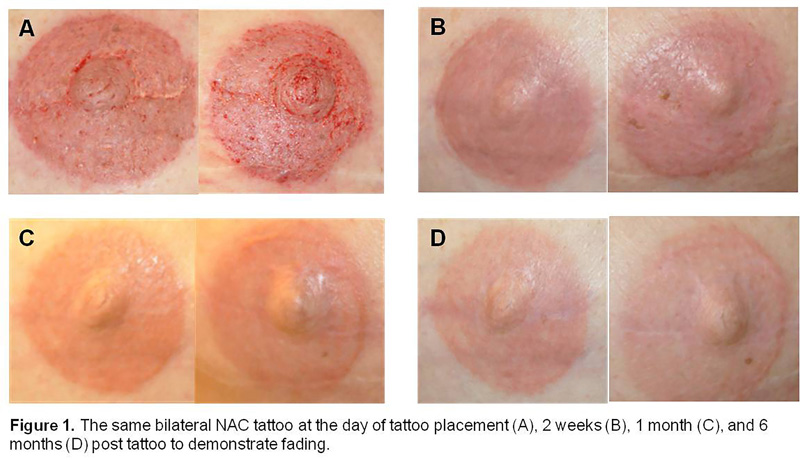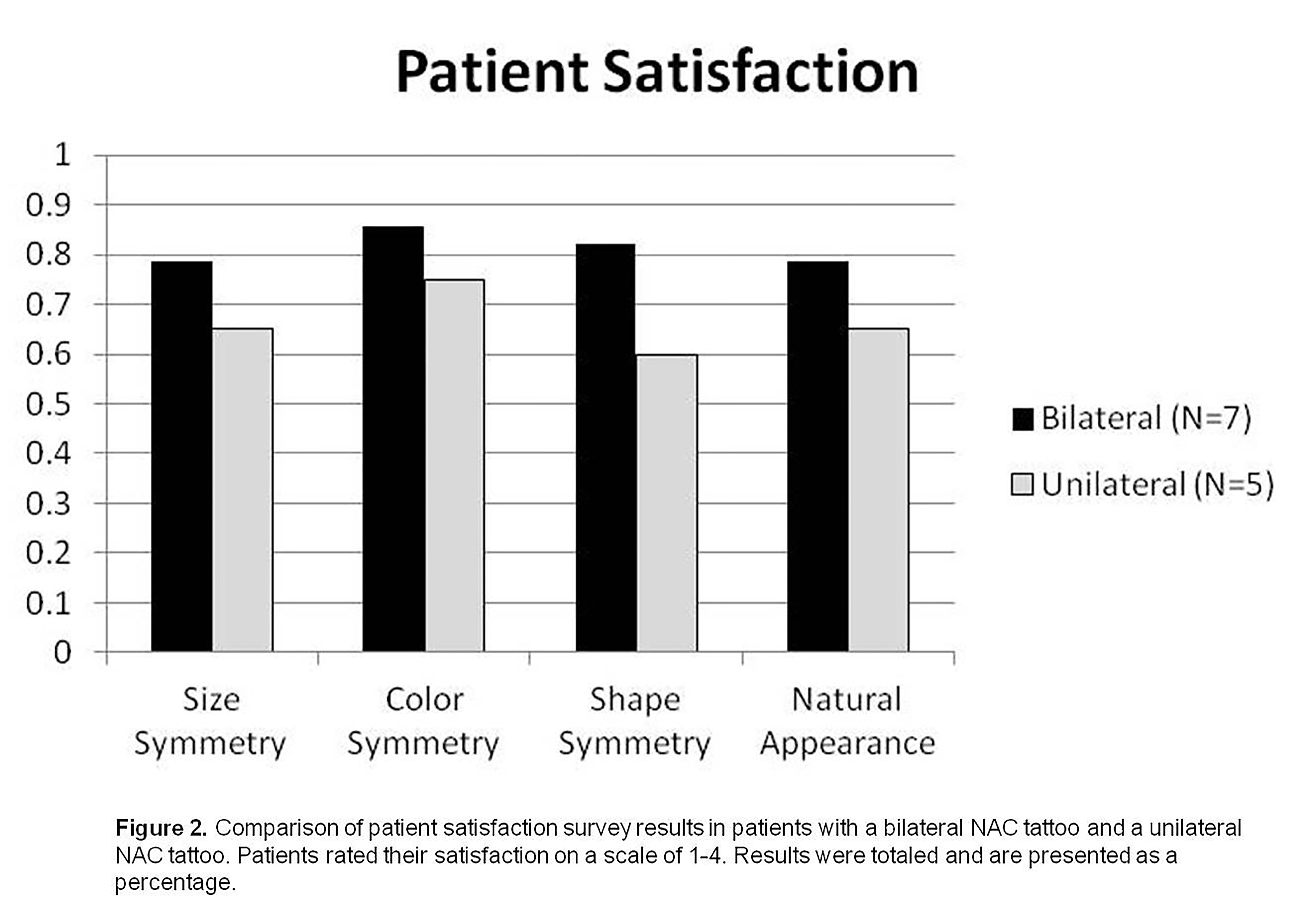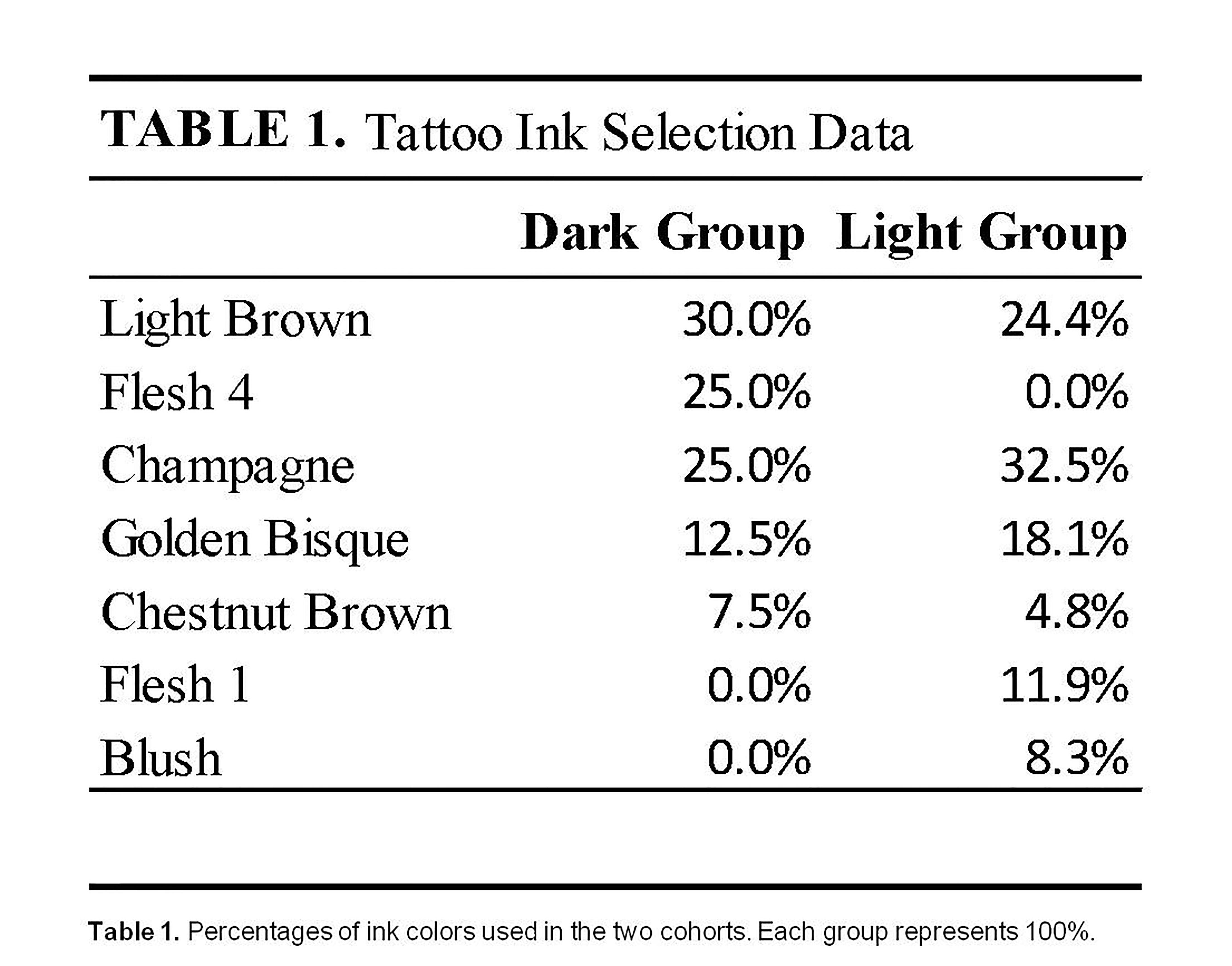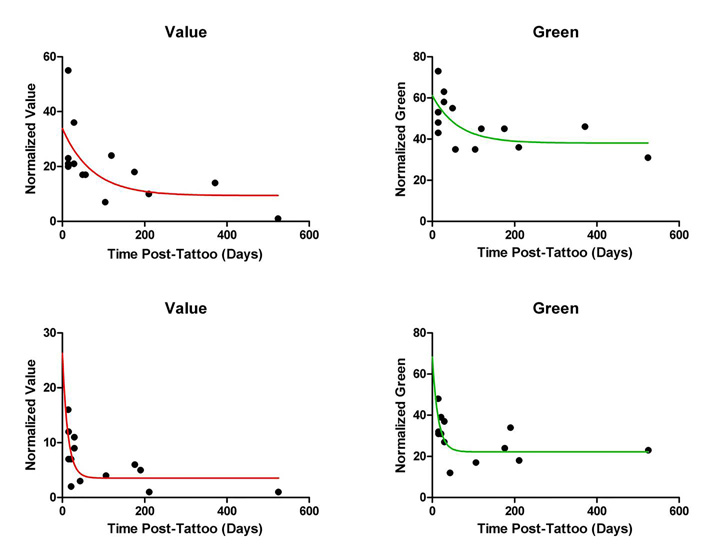|
|
|
|
|
Back to 2014 Annual Meeting Abstracts
Quantitative Analysis of Nipple Areola Complex Tattoo Fade Patterns: Results of a Prospective Study
Heather A. Levites, Anna Lyubchik, BA, Nicholas A. Trasolini, BSE, Indira M. Fromm, Mitchell S. Fourman, M.Phil., Brett T. Phillips, MD, Sami U. Khan, MD, Alexander B. Dagum, MD, Duc T. Bui, MD.
Stony Brook School of Medicine, Stony Brook, NY, USA.
Background
Nipple-Areola Complex (NAC) tattoos are an important component of the reconstructive process following mastectomy, providing patients with a more natural, finished look. Previous retrospective studies conducted at our institution have begun to quantitatively characterize what has been seen clinically_ NAC tattoos are prone to significant fading, often leading patients to seek revisions. This ongoing, prospective study was designed to assess the level of patient satisfaction with NAC tattoo results, and further model changes in tattoo appearance over time.
Methods
Thus far 30 patients are enrolled, with 9 patients returning to the minimum follow-up date of 6 months post-tattoo placement for image capture (Figure 1). From these 9 patients, 27 images were analyzed using ColorPic software (Iconico,New York). Red/Green/Blue and Hue/Saturation/Value color parameters were collected. The photos were split into two groups for modeling, using an initial tattoo Value of 20 as a cutoff point (creating a “light” group and a “dark” group). Anonymous surveys with four patient satisfaction questions were mailed to each participant enrolled in the study. Non-linear regressions were calculated utilizing Graphpad Prism 6.0, (Graphpad,La-Jolla CA).
Results
The results of the survey show a higher NAC tattoo satisfaction in color, shape, and size symmetry of the nipple in patients with bilateral tattoos (response rate:36.7%, average response time 138 days ± 148) (Figure 2). The lighter the tattoo is at the start, the faster it fades (t1/2Light=10.4 days, t1/2Dark=50.5 days). While the darker tattoos fade more slowly, both light and dark tattoos eventually fade approximately the same amount (SpanLight=20.2 Value points, SpanDark=24.5 Value Points) (Figure 3). The tattoo ink colors are displayed in Table 1, as percentages of total ink used in their respective group.
Conclusions
This study aims to better understand the behavior of tattoo fade by utilizing photos taken at consistent 2 week, 1 month, 6 month, and 1 year follow-ups. The curves corresponding to Hue had a poor fit, suggesting that what we think of as the “color” is not a reliable indicator of tattoo behavior; this can also be seen in the relatively similar ink colors of the light and dark groups. The results of the tattoo survey indicate that there is a difference in patient satisfaction between the bilateral and unilateral groups, presumably due to the mismatch between the native and reconstructed nipple. This further emphasizes the need for a reliable method to predict, and ultimately compensate for the fade of NAC tattoos.




Back to 2014 Annual Meeting Abstracts
|
|




